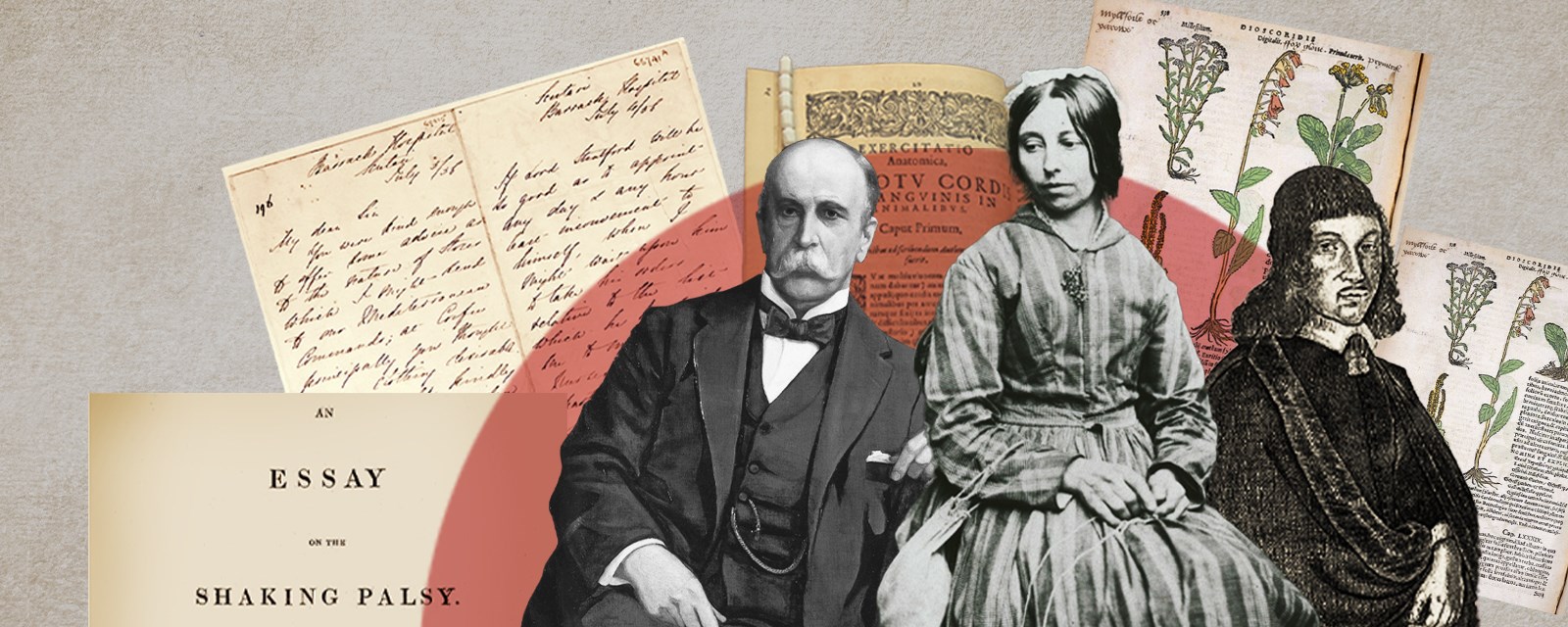
Discover treasures of the RSM
Since its foundation in 1805, the Royal Society of Medicine’s Library has amassed an extraordinary collection of old and rare books, letters, albums, photographs and portraits dating back to the 15th century.
Together with the formal records of the 15 societies that merged in 1907 to form the RSM, the Society’s heritage collection offers a fascinating insight into the history of medicine, the growth of the medical and scientific professions and into the lives of former members of the Society.
In celebration of the RSM Library’s forthcoming online exhibition Treasures of the RSM, we take a closer look at some of the hidden gems found in the RSM archives.
Dioscorides’ De medica materia, Llibri V
Published in 1529, Dioscorides’ De medica materia, Llibri V. is one of RSM’s oldest printed books, in which a Greek physician Dioscorides (fl.AD 54-68) describes over 600 plants. It has since become the most authoritative source concerning the materia medica of antiquity. Purchased by the Society in 1924, the Library Committee noted the copy “belonged to Andreas Vesalius (the ‘father of modern anatomy’) and has his autograph signature on the title page.”
Nicolas Culpeper’s Pharmacopoeia Londinensis
Plants and medicinal herbs feature in Nicolas Culpeper’s Pharmacopoeia Londinensis dating back to 1649. It is a translation from the Latin version of an earlier listing of all medicines known to apothecaries published by the Royal College of Physicians in 1618.
The Society’s 1654 edition of Culpeper belonged at one time to the poet and novelist, Rudyard Kipling (1865–1936). It contains Kipling’s distinctive bookplate and a letter from Kipling to his friend, Sir John Bland-Sutton, the eminent surgeon and naturalist who served as President of the RSM from 1920 to 1922 and whose widow donated this copy following his death in 1936.
De Motus Cordis by William Harvey
The rarest book in the RSM’s collection, William Harvey’s De Motus Cordis was published in 1628 and is one of only 55 copies. This seminal work established how blood circulates through the body. Harvey reached his conclusions through observation, experiment, measurement and hypothesis; a model recognisable today but novel for the 17th century. This outstanding work was bought at auction and donated to the Society in 1917 by Sir William Osler, often described as the ‘father of modern medicine’ for his revolutionary approach to medical education.
James Parkinson’s Essay on the Shaking Palsy
The RSM was established in 1805 as the Medical and Chirurgical Society and it has a long history of its members coming together to share medical knowledge from a broad spectrum of specialties. In 1817, the geologist, surgeon and physician, James Parkinson (1755–1824), donated a copy of his ‘Essay on the Shaking Palsy’ to the Society.
Parkinson drew on his categorising skills as a geologist with methodical observation of individual cases, to write the first study of this neurological condition. Decades later, it became known as the seminal work on ‘Parkinson’s disease’. The RSM holds two of only six copies of the essay in existence.
Florence Nightingale’s publications
Amongst the 19th century treasures lie several books by Florence Nightingale (1820–1910), including her reports from wartime Crimea describing poor sanitary conditions for wounded soldiers and her publications on hospital design and hygiene following her return to England in 1856. The Library’s copy of Nightingale’s Introductory Notes on Lying-in Institutions (1871) is inscribed by her to Sir James Paget, the surgical pathologist who, from 1875 to 1877, served as President of the Royal Medical and Chirurgical Society.
The Library is also home to her perhaps less well-known work Notes on Matters Affecting the Health, Efficiency, and Hospital Administration of the British Army, published in 1858. Unwilling to pre-empt the findings of the Royal Commission on the Army, only a few copies were printed and presented to influential figures; the book was never presented to the public and is the rarest and least-known of Florence Nightingale’s publications.
Photographs of psychiatric patients by Hugh Welch Diamond
Photographs by the psychiatrist, Hugh Welch Diamond (1809-1886) of patients with psychiatric disorders form a rare and valuable collection. Selected items from an extensive collection of prints and portraits have featured in the online exhibitions Women in Medicine and most recently Notable Presidents – and there are many more portraits, artworks and sculptures owned by the RSM that are now available to view through the Art UK website.
The forthcoming exhibition, Treasures from the RSM will be available online soon alongside the Library’s previous exhibitions. Visit www.rsm.ac.uk/exhibitions to view all our exhibitions.
The Library is currently closed to visitors, however when normal services resume, all items in our collections including old and rare books, manuscripts and the RSMs’ archives can be viewed by appointment during regular opening hours. To enquire email library@rsm.ac.uk.
